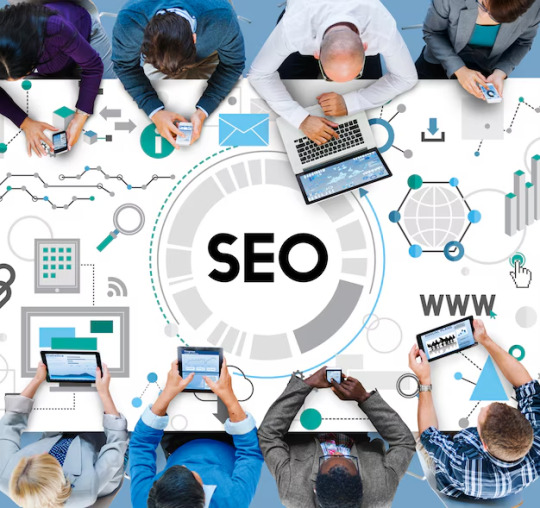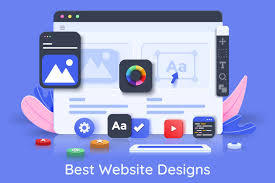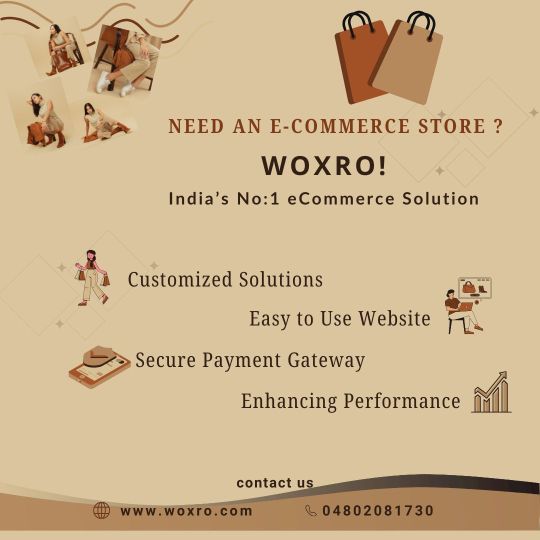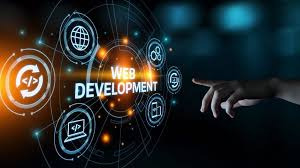Don't wanna be here? Send us removal request.
Text
How to Sell More Online with the Right Technology & Marketing
Selling online in today's competitive online market is not as simple as just having a website. It is about adopting the right technology, executing clever marketing approaches, and establishing a robust brand voice. Whether you're a small business or an established firm, having a good IT company by your side can be the game-changer that propels your online sales.
Here's how the perfect combination of technology and marketing services can assist you in selling more online.

1. Create a High-Performance Website That Converts
Your website is your online storefront. It needs to be fast, mobile-friendly, easy to use, and conversion-optimized.
Custom Web Development: A website that's uniquely designed to mirror your brand and business objectives.
Responsive Design: Provide a seamless experience across devices.
Conversion Optimization: Strategically positioned CTAs, compelling visuals, and action-driving user flow.
Through expert web development services, your business can excel and offer a seamless online experience that delivers results.
2. Launch a Strong Ecommerce Platform

If you're doing business selling products or services online, your ecommerce platform needs to be strong, secure, and scalable.
Secure Payment Integration
Custom Ecommerce Development
Inventory & Order Management Systems
Analytics & Customer Insights
A high-end ecommerce development agency will make sure that your website store is sale optimized, allows different payment gateways, and is a checkout pleasure.
3. Go Mobile – Engage with Customers on the Move
Mobile commerce has taken off in recent times, so having an app can exponentially drive engagement and sales.
iOS & Android App Development
Push Offers & Update Notifications
Location-Based Marketing
In-App Support for Enhanced Customer Experience
A custom mobile app development solution enhances brand loyalty and keeps your customers connected 24/7.
4. Drive Traffic with Data-Driven Digital Marketing
Even the best website won’t sell if no one visits it. This is where digital marketing plays a vital role.
Search Engine Optimization (SEO) to rank higher on Google
Social Media Marketing (SMM) to connect with your audience
Pay-Per-Click Advertising (PPC) for immediate visibility
Email Campaigns that nurture leads
With the proper performance marketing, you bring in high-quality traffic and turn visitors into loyal customers.
5. Establish Trust With Professional Branding
Your brand is your guarantee to the customer. A unified and strong brand establishes trust and generates conversions.

Logo & Visual Identity Design
Brand Messaging & Voice
Brand Campaigns & Storytelling
Investing in branding services guarantees consistency across all channels—from your website and app to ads and social channels.
6. Combine Analytics and Optimize Ongoing
Selling more online involves continuous analysis and optimization.
Leverage tools such as Google Analytics, Hotjar, and GA4
Monitor customer behavior and drop-off points
Optimize funnels and A/B test key elements
A great IT company doesn't only create your digital presence—they assist you in monitoring performance, insights, and ongoing improvement.
Conclusion
Success online isn't merely about getting a website up or placing some ads. It's about creating a complete ecosystem with the appropriate technology and marketing strategy—and that's where an experienced IT solutions provider comes in.
Whether you require web development, ecommerce solutions, mobile apps, digital marketing, or branding, selecting the right partner can assist you in realizing your entire online sales potential.
Want to expand your business online? Opt for an IT firm that combines innovation, creativity, and performance to propel your brand.
#ecommerce website design#web design company#web development#web design#web developing company#seo agency#it company#mobile app development#custom software development
0 notes
Text
Progressive Web Apps vs. Native Apps – Which One Increases Conversions?
In today's rapidly evolving digital world, user experience breaks or makes your brand. Your company is an ecommerce business, a startup, or a corporation, but whatever, choosing the proper mobile solution will be key when it comes to driving conversions and customer engagement.
Companies are generally classified into Progressive Web Apps (PWAs) and Native Apps. We are web developers, ecommerce developers, and mobile app developers at Woxro, and we fully understand how important it is to your online success.
Then, what do you utilize in order to boost conversions better — Progressive Web Apps or Native Apps? Let us find out.

What is a Progressive Web App (PWA)?
A Progressive Web App is a web app that takes advantage of the web's latest feature in order to provide the user with an app-like experience. PWAs are installable on the home screen, responsive, fast, and secure without having to use app stores.
Primary PWA Characteristics:
Offline use
Push notifications
Blazingly quick loads
Home screen installability
Cross-platform compatibility
What is a Native App?
A Native App is developed specifically for a certain operating system (iOS or Android) with native platform languages (Swift or Kotlin). They have rich capability, more device-level integration, and better behavior.
Key Features of Native Apps:
Access to hardware on devices (camera, GPS, sensors)
Rich and silky-smooth animations
Enhanced offline access
Found via app stores
Conversion Comparison: PWAs vs. Native Apps
Both in so far as conversion is involved, they can. But PWAs are emerging as the game-changer for businesses that want to achieve faster customer acquisition along with reduced development costs.
Why PWAs Boost Conversions:
Fast Loading = Reduced Bounce Rate PWAs are loaded in microseconds even on lower-grade networks. That enhances the user experience and reduces bounce rates — one of the highest influencers towards increasing ecommerce conversions.
No Download Fuss PWAs eliminate the fuss associated with downloading an app from the app store. Individuals can start engaging with your business right away — making faster sales.

Cross-Device Reach Since there's only a single codebase, PWAs work on any device. That's saving you time-to-market and delivering consistent brand experience, one of the elements of a good brand and online marketing efforts.
Better SEO Because PWAs are basically websites, they're crawled by search engines. That gets you ranked higher in SERPs — something native apps can't accomplish. A two-fer for your SEO and digital marketing efforts.
Cost-Effective Development PWAs save development and maintenance costs, particularly for organizations that are committing a lot of money to web and mobile experiences. A prudent decision if you're launching a new ecommerce store or starting a new venture.
When Native Apps Make More Sense
While PWAs offer many benefits, Native Apps remain to be used when there's a need for:
Deeply integrated hardware
Heavy graphical computation (games, for example)
Complex functionalities or animations
Visibility in app stores
Thus, if you are building an application with rich features, a native experience can be the best choice.
What We Recommend
Our ecommerce solution, web development, and mobile app development professionals at Woxro analyze your business requirements, audience, and objectives to suggest the best fit.
If your biggest concern is:
Quick deployment
Cost minimization
Extended reach
Lightning-fast conversions
Then Progressive Web Apps are your best option.
But if you're looking for:
Great performance
Deep device access
App store visibility
Then a Native App can provide you with the competitive edge you're looking for.
Final Thoughts
The Native Apps vs. Progressive Web Apps debate isn't about better — it's about better for you.
If you're an online business, a service business, or an enterprise seeking to expand in the digital world, now's the time to choose the best for your business. Whether it's a lightning-fast PWA or a robust native app,Woxro can assist you in driving maximum conversions and delivering unparalleled digital experiences.
0 notes
Text
🔥 Boost Conversions with Expert CRO Strategies | Woxro

Want to turn more visitors into customers? 🚀 Discover Woxro’s proven Conversion Rate Optimization (CRO) strategies that enhance user experience, increase engagement and drive more sales. 💡 Elevate your digital presence today! 👉 www.woxro.com #CRO #Woxro #DigitalSuccess
0 notes
Text
Web Design Basics: What Your Business Needs to Do to Succeed at Busine
With the digital-first age, establishing a robust online presence as a business has never been more important. Your website is the pillar of your brand's digital marketing, determining everything from customer interaction to conversion. Regardless of whether it's branding, site building, e-commerce building, mobile app development, digital marketing, SEO, or performance marketing, website-building fundamentals are the same. This is a complete guide to what every business must do in order to prosper online.

1. Powerful Brand Identity
Your site is your brand. It has to clearly articulate your mission, values, and unique selling points (USPs). A powerful brand identity entails:
Professional Logo: Simple to remember and elegant logo creates more visibility.
Consistent Color Scheme & Typography: Consistency everywhere sets new standards.
Visual appeal & well-crafted UI/UX elements create lasting impressions.
2. Easy-to-Use Web Design & Navigation
A poorly designed website may scare away potential buyers. Take note of these:
Responsive Design: Make your website look and function beautifully on desktops, tablets, and mobiles.
Intuitive Navigation: Smooth user experience boosts engagement and minimizes bounce rates.
Clear Call-to-Actions (CTAs): Strategically located CTAs drive users to conversions.

3. Quick Loading Speed & Performance Optimization
Slow website annoys users and damages search engine rankings. To optimize performance:
Compress Images & Use Lazy Loading: Heavy media files make your website slow. Compress images without compromising on quality but cutting down on loading time.
Utilize Browser Caching & Code Minification: Effective coding habits improve performance.
Use a Content Delivery Network (CDN): Speeds up loading by sending content to numerous servers.
4. Mobile Optimization & App Integration
Most of the traffic these days comes from mobile phones, so mobile optimization is now a must. Ensure that:
Mobile-Responsive Designs: Your site auto-resizes with changing screen sizes.
Progressive Web Apps (PWAs): Giving app-like experiences through a browser increases engagement.
Seamless Mobile App Integration: Provided you have an app, integrating it with your website provides a consistent user experience.
5. Search Engine Optimization (SEO) Best Practices
SEO is vital to organic traffic generation. Practice the following:
Keyword Optimization: Add proper keywords organically into content.
Meta Tags & Alt Text: Metatitles, descriptions, and image alt tags need to be optimized for higher search visibility.
Internal & External Linking: Link internally to trustworthy sources and link internally between similar pages for maximum SEO.
Technical SEO: Leverage schema markup, XML sitemaps, and robots.txt to enhance crawling and search engine indexing.

6. E-commerce Functions & Payment Gateways
For internet consumers, a functional e-commerce site is the success key. The best features are:
Secure Payment Gateways: Allow for different payment options like PayPal, Stripe, or Razorpay.
Product Optimization: Maximize with high-definition images, detailed descriptions, and reviews for conversion.
Cart Abandonment Recovery: Automated emails can retrieve abandoned sales.
7. High-Quality, Engaging Content
Content marketing is an effective way to attract and engage the customer base. Must-content features are:
In-Depth Blog Posts: Develop SEO-optimized blog posts occasionally that inform and entertain your visitors.
Conversational Product & Service Pages: Just tell what you are providing and why it is in the best interest of your customers.
Customer Testimonials & Case Studies: Build trust and credibility by providing real user experience.
8. Security & Data Protection
Web security is non-negotiable when it comes to web design. Install:
SSL Certificates: Secure data to secure transactions and search rankings.
Security Audits: Catch and prevent likely breaches.
GDPR Compliance: Implement data privacy protocols to protect customer information.
9. Performance Marketing & Analytics
An incomplete website without tracking and optimization. Use:
Google Analytics & Heatmaps: Track behavior and optimize web strategies.
Conversion Rate Optimization (CRO): Test items like headlines and CTAs to increase conversions.
Social Media & PPC Integration: Leverage paid marketing and social media engagement to become more dominant.
10. Regular Maintenance & Scalability
A site is never truly 'complete.' To stay competitive:
Periodic Updates: Periodic software, plugin, and content updates.
Bug Fixes & Troubleshooting: Seamless functionality with timely fixes.
Scalability for Growth: Your site needs to be scalable to handle growth in traffic and more features as your business grows.
Conclusion
A well-designed site is a business energy source that powers business advancement. You're a branding master, site designer, e-commerce designer, smartphone application developer, SEO master, or internet advertising specialist - these site building blocks will definitely create a healthful online presence, enhance business relationship with consumers, and enhance conversion.
The requirement for professional website development services? Get in touch with us today to develop a high-performing, business-friendly, and SEO-optimized website based on your business requirements.
#Web Design Basics#web design company#web development#web developing company#web development company in india#web design#web developers
0 notes
Text
🚀 Best SEO Company in India | Future-Proof SEO Strategies for 2025

Discover how SEO is evolving in 2025! As the best SEO company in India, we help businesses stay ahead with AI-powered strategies, voice search optimization, and mobile-first indexing. Boost your rankings today! 🚀
0 notes
Text
Why User Experience (UX) Design Is Non-Negotiable for Websites in the Digital Era

Introduction
In today’s fast-paced digital world, a website serves as the virtual storefront of a brand. Whether it’s an e-commerce platform, a corporate website, or a personal blog, the way users interact with a site determines its success. User Experience (UX) design has evolved from being a luxury to an absolute necessity. A website with poor UX can lead to high bounce rates, low engagement, and a negative brand image. On the other hand, a well-designed UX fosters user satisfaction, increases conversions, and builds customer loyalty. In this article, we will explore why UX design is non-negotiable in website development in the digital era and how it impacts business success.

Understanding UX Design
User Experience (UX) design refers to the process of creating websites that offer meaningful and relevant experiences to users. It encompasses usability, accessibility, performance, and overall interaction. A good UX design company ensures that visitors can easily navigate, find information, and complete their desired actions without frustration.
The Growing Importance of UX in the Digital Landscape
With an ever-increasing number of online businesses and websites, users have become more selective about where they spend their time. If a website fails to meet their expectations, they will quickly move on to a competitor. Here’s why UX design is crucial in the digital era:
1. First Impressions Matter
Studies show that users form an opinion about a website within the first few seconds of visiting. A well-structured and visually appealing site with intuitive navigation creates a positive first impression. If the site is cluttered, slow, or confusing, visitors are more likely to leave immediately.
2. Enhanced Usability and Accessibility
A user-friendly website ensures that people of all abilities can navigate and interact with content seamlessly. This includes mobile responsiveness, clear typography, simple navigation menus, and compatibility with assistive technologies. An accessible website broadens the audience and improves overall engagement.

3. SEO and Search Ranking Benefits
Search engines like Google prioritize websites that offer excellent user experiences. UX factors such as page load speed, mobile-friendliness, and easy navigation play a crucial role in search engine rankings. A well-optimized UX not only enhances usability but also improves organic search visibility, driving more traffic to the website.
4. Higher Conversion Rates
A well-designed UX directly impacts conversions. When users find a website easy to use, they are more likely to take the desired action—whether it’s making a purchase, signing up for a newsletter, or filling out a contact form. Streamlining the user journey, reducing friction points, and providing clear calls-to-action (CTAs) can significantly boost conversion rates.
5. Building Trust and Credibility
A professional and user-centric website fosters trust among visitors. Poor UX, such as broken links, outdated content, or an unresponsive design, can make a website appear untrustworthy. By ensuring a smooth and reliable user experience, businesses can build credibility and encourage repeat visits.
6. Mobile Experience Is Critical
With more than half of global web traffic coming from mobile devices, a mobile-optimized UX is no longer optional. A responsive design ensures that a website functions well across various screen sizes, enhancing accessibility and user satisfaction.
7. Competitive Advantage
In a crowded digital marketplace, UX design can be a key differentiator. Businesses that invest in superior user experiences gain a competitive edge by retaining customers, improving brand perception, and increasing customer lifetime value.
Essential UX Design Practices for Websites
To create a seamless user experience, consider the following UX design best practices:
1. Prioritize Speed and Performance
Slow-loading websites frustrate users and lead to higher bounce rates. Optimize images, use efficient coding practices, and leverage content delivery networks (CDNs) to enhance site speed.
2. Keep Navigation Simple and Intuitive
Users should be able to find what they need with minimal effort. Use clear menu structures, logical categorization, and an easy-to-use search function to improve navigation.
3. Mobile-First Design Approach
Given the rise of mobile browsing, designing with a mobile-first approach ensures that the website is functional and visually appealing across all devices.
4. Focus on Readability and Visual Hierarchy
Well-structured content with appropriate font sizes, contrast, and spacing enhances readability. A clear visual hierarchy guides users toward important information and actions.
5. Test and Iterate
User behavior and preferences evolve over time. Conduct usability testing, gather feedback, and make data-driven improvements to enhance UX continually.
Conclusion
In the digital era, UX design is not just an aesthetic choice but a fundamental component of a website’s success. A user-friendly, accessible, and well-optimized website not only enhances engagement but also drives business growth. Companies that prioritize UX gain customer trust, improve search rankings, and stay ahead in the competitive online landscape. Investing in UX design is no longer optional—it’s a necessity for any website that aims to thrive in the digital world.
0 notes
Text
How AI and Machine Learning Are Shaping the Future of Websites
Introduction
Artificial Intelligence (AI) and Machine Learning (ML) are revolutionizing the digital landscape, especially in the realm of web development and optimization. These technologies are transforming websites by enhancing user experiences, improving search engine optimization (SEO), strengthening security, and streamlining design and development processes. With the increasing demand for smarter, faster, and more efficient online platforms, AI and ML are becoming indispensable tools for businesses and web developers alike.

Enhancing User Experience with AI
User experience is a critical factor in determining the success of a website, and AI-driven solutions are taking it to the next level. AI-powered chatbots and virtual assistants provide real-time customer support, answering queries and offering solutions instantly. These intelligent systems leverage natural language processing (NLP) to understand and respond to user intent, making interactions more seamless and personalized.
Machine learning algorithms analyze user behavior, tracking browsing patterns and preferences to tailor recommendations accordingly. For example, e-commerce websites use AI to suggest products based on past purchases and search history, increasing customer engagement and boosting sales. Personalized content recommendations on streaming platforms like Netflix and YouTube also rely on AI-driven data analysis to keep users engaged for longer periods.
Voice search is another AI-powered advancement that is reshaping website interactions. With the growing popularity of voice assistants like Siri, Google Assistant, and Alexa, websites are now optimizing content for voice queries. AI enables accurate voice recognition and contextual understanding, allowing users to navigate websites more intuitively and efficiently.

AI-Powered Search Engine Optimization (SEO)
Search engines are continuously evolving to deliver more relevant and accurate search results. AI and ML have significantly influenced SEO strategies by refining search algorithms and prioritizing user intent. Google’s RankBrain, an AI-based algorithm, plays a key role in processing search queries and ranking web pages based on relevance and engagement metrics.
AI-powered SEO tools help webmasters optimize content, conduct keyword research, and analyze website performance. Tools like SEMrush, Ahrefs, and Moz use machine learning to provide data-driven insights, enabling businesses to refine their digital marketing strategies effectively. AI also assists in content optimization by generating topic suggestions, analyzing competitor strategies, and predicting trends that can improve search rankings.
Automated content generation is another emerging trend in AI-driven SEO. Natural Language Generation (NLG) tools can create human-like content for blogs, product descriptions, and meta tags. While AI-generated content still requires human supervision, it significantly reduces the time and effort needed for content creation and SEO implementation.
Strengthening Website Security with AI
With cyber threats becoming increasingly sophisticated, website security is more crucial than ever. AI and ML play a pivotal role in identifying and mitigating security threats before they cause damage. AI-driven security systems analyze vast amounts of data to detect anomalies, flagging potential threats in real time.
Machine learning algorithms are trained to recognize malicious activities, such as phishing attacks, DDoS attacks, and malware intrusions. By continuously learning from new security threats, AI-powered systems can predict vulnerabilities and strengthen website defenses. AI also assists in fraud detection, particularly in e-commerce transactions, by analyzing user behavior patterns and identifying suspicious activities.
AI-powered CAPTCHA systems enhance website security by distinguishing between human users and bots. These intelligent CAPTCHAs use behavioral analysis to determine whether an interaction is genuine, reducing the chances of automated cyberattacks.
AI in Web Design and Development
AI is reshaping web design and development by automating processes and optimizing website performance. AI-powered website builders, such as Wix ADI and Bookmark, allow users to create visually appealing and functional websites without the need for extensive coding knowledge. These platforms analyze user preferences and industry trends to suggest design elements, layouts, and color schemes that enhance user experience.
Machine learning algorithms also play a role in performance optimization by analyzing website speed, loading times, and responsiveness. AI-powered tools identify areas that need improvement, ensuring websites meet performance standards set by search engines and user expectations.
Automated testing is another area where AI is making a significant impact. AI-driven testing tools conduct usability tests, detect bugs, and suggest enhancements to improve website functionality. This reduces the time spent on manual testing and accelerates the development cycle, leading to faster website deployment and updates.
The Future of AI in Website Development
As AI and ML continue to advance, the future of web development will be characterized by smarter automation, hyper-personalization, and stronger security measures. Businesses that integrate AI into their websites will gain a competitive edge by delivering seamless user experiences, improving search visibility, and maintaining robust security.
AI-powered voice and visual search capabilities will become more prevalent, requiring websites to optimize content accordingly. With the rise of augmented reality (AR) and virtual reality (VR), AI will enhance immersive web experiences, allowing users to interact with websites in entirely new ways.
Moreover, AI will continue to streamline website maintenance by automating updates, monitoring performance, and predicting potential issues before they occur. This will result in more efficient website management and reduced downtime, ensuring users have uninterrupted access to digital platforms.
Conclusion
AI and machine learning are shaping the future of websites in profound ways, enhancing user experience, SEO, security, and design. Businesses and developers that embrace these technologies will be well-positioned to thrive in the ever-evolving digital landscape. As AI continues to advance, websites will become more intelligent, efficient, and user-centric, providing seamless interactions and optimized performance. The integration of AI is no longer a luxury but a necessity in today’s digital world, paving the way for a smarter and more intuitive web experience.
#web design#web design company#web development company in india#web developers#web development#web developing company
0 notes
Text
Revolutionizing E-Commerce with 3D Website Development: The Future of Online Shopping
With its constantly evolving features, the online commerce world is always searching for new means of blending more immersive customer experiences. Of all the developments that have come with this, the most interesting remains 3D website development- the knight in shining armor for all these online shoppers. As these leaders are embracing ecommerce development companies with technology, they experience how they can change the way the products are visualized, bringing up engagement and increasing conversion.

A Nutshell of 3D Website Development in E-Commerce
The old traditional e-stores use 2D images and videos, which in most cases do not give very accurate views of the product. With 3D web development, companies will be able to create virtual storefronts where customers will experience shopping in real life more closely. The technology lets users view products in 360-degree views, interact with them, and thus make better purchase decisions.
Why Ecommerce Businesses Need 3D Web Development
E-commerce companies may really gain a lot if the web development company has experience in 3D solutions. The reasons why the 3D elements are integrated into the website:
Better User Experience-Animated and interactive 3D images will lead to a better understanding of the products and higher customer satisfaction.
Higher Conversion Rates-Users are engaged longer on the website with the help of interactive 3D models, thereby increasing the possibility of conversion.
Fewer Returns – As the previews using 3D technology are true-to-size, a consumer finds more knowledge of what the product has inside. There is fewer returning by consumers
Brand Reputation – Developing an actual ecommerce 3D website endows a company with an ideal market positioning which allows businesses to edge in on others through quality differentiation.
360-degree Product Views: This would let the user view every angle possible so close-ups can be done.
AR Integration: Users could see products in a way to live in their world.
Virtual Storefronts: The experience is more immersive, just as it would be in real-life shopping.
Personalized Products: Color, texture, and design can be personalized before purchase to customer preference.
AI-Driven Recommendations – This service will allow personalizing the shopping experience based on the customer's preference.

How to Choose the Best Ecommerce Development Company
Only an experienced ecommerce development company will make the 3D website creation process a success. Here's what to look for:
Experience & Portfolio – Review their previous work to ensure they have experience in 3D web development.
Technical know-how: They must be properly experienced in WebGL, Three.js, and AR/VR.
Customization: It should meet the needs of the brand.
SEO & Performance optimization: 3D elements should not compromise website's speed or ranking in search results.

Future of E-Commerce 3D
This is going to be the future of standard e-commerce with full details of higher technology, such as 3D website development. Whosoever tries it first gets an important competitive advantage. Next-level online shopping experience powered by an expert web development company can bring real engagement and a sale at all times.
Get ready to catapult your e-commerce site with the best in 3D technology. Let's find the perfect partnership for turning this dream into reality for you: get redefined online shopping experience for your customers through an experienced ecommerce development company.
#3d website development#3d ecommerce development#ecommerce development company#ecommerce development agency#website development#web development company in India#web design company
0 notes
Text
Woxro: The One-Stop Solution for All Your Website Challenges

Woxro, the ultimate solution for all your website needs. From design to development, we deliver seamless, innovative, and reliable ecommerce web solutions tailored to your business.
know more about us
0 notes
Text
Page Speed Matters: Tips to Develop Lightning-Fast Websites
The world is digital today, and if one's attention span is shorter than ever, a page speed determines the success of a website. A slow site is frustrating, not only to the users but also reduces the search rankings and conversion rate. Being a web development company, we well understand the necessity to build lightning-fast websites so that visitors engage and perform activities with seamless ease. In this article, we'll try to understand why page speed is crucial and give you actionable tips to optimize your website's loading time.

Why Page Speed is Important
User Experience: Modern users want websites to load in a few seconds. A one-second delay may increase the bounce rate, or leave your website without engaging with its content.
SEO Rankings: Google and other search engines rank websites according to their speed. This means really slow ones get pushed back from the search results.
Mobile traffic: More than half of the web traffic comes from mobiles. It is essential to make sure that the site works perfectly on all screen sizes and speed of connections.
Conversions and Revenue: Conversion rates are relatively higher for fast websites. The speed of loading may be directly related to revenue in e-commerce business.
How to Create Lightning-Fast Websites
1. Optimize Images
Images often use most of the webpage's loading time. Compress images, yet in quality, so the file size is reduced, which is what modern formats like WebP do exceptionally well-together with very high quality-compression. In addition, use lazy loading to ensure images do not need to load until they are in view.
2. Browser Caching
This method saves some of the elements on your website to the user's browser, thus decreasing the time required to reload them during subsequent visits. Website developers can configure rules for caching the images, stylesheets, and scripts, thus ensuring quicker repeat visits.
3. Minify CSS, JavaScript, and HTML
Remove unnecessary characters, spaces, and comments from the code of your website to load faster. The minification tool available can be applied using UglifyJS and CSSNano for resources. Clean and optimized code does not only make the site faster but also more maintainable.
4. Use a Content Delivery Network:
A CDN distributes all of your website content across multiple servers around the world, which means everyone loads data from a server nearest to him. Latency is therefore minimized and leads to significantly higher loads, especially among international customers.
5. Enable Gzip Compression
This makes your files significantly smaller, downloading at much faster speeds. Most contemporary web servers support Gzip, and configuring its settings requires few adjustments to code in order to considerably improve page speed.
6. Use a good host
Another critical factor in the speed of your website would be your hosting provider. Choose hosting services that have fast servers, SSD storage, and scalable resources. For business users, there is managed hosting for certain platforms, and it is great as managed WordPress hosting, for example.
7. Optimize for Mobile
Optimize for mobile users since mobile-first indexing is the future. Use responsive design, lightweight themes, and other mobile-friendliness features to perform better on hand-held devices.
8. Limit Redirect
The redirects are one source of unnecessary HTTP requests that add load times. Audit your site to lower the redirects such that people reach the right page the first time they try.
9. Prioritize Critical Resources
Determine resources that need to load before the above-the-fold content loads quickly. PageSpeed Insights and Lighthouse are the tools that can help you identify those resources along with recommendations.
10. Monitor and Test Page Speed Continuously
Regular monitoring will help you identify potential bottlenecks in your website's speed. Tools like GTmetrix, Pingdom, and Google PageSpeed Insights give you insights into how your site is performing, enabling you to make data-driven optimizations.

How a Web Development Company Can Help
A fast-loading website requires a combination of technical know-how, strategic planning, and continuous maintenance. Being an experienced web development company, we have been providing our clients with the perfect balance between design aesthetics and high performance in websites. Our skilled website developers make use of the latest technologies and best practices to ensure the best speed, functionality, and user experience.
From optimizing images to implementing CDNs and caching mechanisms, our website developers are on all the details that impact page speed. We also test with thoroughness to catch performance issues, so your website is always giving lightning-fast experiences for your users.
Benefits of a Fast Website
Improved User Retention: Fast websites keep users engaged and encourage them to browse more pages.
Higher Search Rankings: The search engine websites tend to favor those websites that load quick; one tends to stay ahead of others.
Better Conversion: A slick user experience yields better conversion rates as well as revenues.
Better Reach: Quick loads make sites accessible by various devices as well as a range of networks.
But with speed and efficiency nearly being synonymous words in the present times, developing a lightning-fast website is not a choice; it's a compulsion. We, at the web development company, understand the impact that page speed makes on user satisfaction, search visibility, and ultimately, business success. Following the tips given above, combined with collaborating with expert website developers, will be able to get you that performing website, bringing you the desired results.
Hence, optimizing your website's speed is not just a one-time thing but is rather an evolving process with respect to changing technologies and user expectations. Always be one step ahead; therefore, always give priority to speed, and your website will not only present amazing user experiences but also present your business at the forefront in the digital marketplace.
0 notes
Text
E-commerce website development in India: the booming industry
With a fast-growing digital economy and the number of Internet users growing by the day, it has emerged as one of the most energetic markets in the world for e-commerce. Business, which realizes more and more how important this type of trade can be, now sees skyrocketing demand for the development of an e-commerce website. This paper discusses the main issues in the development of e-commerce websites in India and lists some of the challenges, opportunities, and best practices followed.

Emergence of E-Commerce in India
Over the last decade, the Indian e-commerce market has exploded exponentially with growth, thanks to affordable smartphones, cheaper data plans, and a very tech-savvy population. Over the last few years, studies indicate that the Indian e-commerce market is expected to reach $188 billion by 2030, overtaken by growing consumer demand and internet penetration into tier-2 and tier-3 cities.
Major players like Flipkart, Amazon India, and Myntra have changed the shopping style of Indians. Small, medium-sized as well as larger enterprises are opening their e-commerce websites.
Critical Features of Successful E-commerce
In today's highly competitive landscape of e-commerce, a company requires a website with functionality, ease of use and smoothness at the time of shopping. Below are some key features of the e-commerce site:
User-Friendly Design: This responsive and user-friendly interface allows the user to easily navigate through it on any gadget.
Secure Payment Gateways: In this era of fast increasing cybercrimes, such secure payment gateways as Razor pay, Paytm, or UPI are a must include.
Fast Loading Speed: Consumers in India generally expect websites to load fast; even an extra few seconds may result in lost sales.
Personalization: AI-based product recommendation will enhance the engagement of the customer and eventually result in higher conversion.
Multilingual and Multicurrency Support: Since e-commerce is moving to rural areas, it would help a business reach a wider audience by supporting regional languages for content.
Logistics Integration: The smooth integration of logistics partners like Delhivery or Ecom Express would ensure timely delivery and real-time tracking of orders.
Challenges in Building an E-commerce Website
Even while the e-commerce sector in India is booming, there are several challenges to be built as a successful e-commerce website:
There is extreme diversity in language, culture, and purchasing behavior offered by markets in India, thus requiring much effort to cater to diverse tastes and preferences.
Competition: Thousands of e-commerce sites entering the market pose the problem, so the business has to differentiate itself with innovative offerings and superior user experience.
Technical Expertise: It will be a highly secure, scalable, and feature-rich e-commerce platform, thus needing developers skilled in the present frameworks and technologies.
Regulatory Compliance: Legal requirement covers all data privacy laws and GST regulations, making the platform legally non-problematic for business operations.
Digital Divide: Although e-commerce has easy adaptation to urban sections in India, many others in the rural areas are neither online nor extremely willing to change to digital payment.
Large e-commerce Development Companies in India
Some are getting popular for developing e-commerce platforms. They give good tools along with choices to customize them. Some of these are:
Shopify: Much in favor of small and medium businesses due to its simplicity in usage.
WooCommerce: This is the WordPress plugin ideal for content-oriented e-commerce websites.
Magento: The platform is ideal for large businesses because it's very powerful and scalable.
OpenCart: For those businesses with very tight budgets, OpenCart will do the job.
Custom Development: Most businesses like to develop their own website based on some of the above frameworks such as React, Angular, or Laravel.
Best Practices in E-Commerce Development
To implement a successful development of e-commerce website in India, the best practices are:
Know your target audience. Find out what your customers need, want, and would buy from market research.
Mobile Optimization: The internet is browsed by over 80% of Indians via mobiles. So, there is only a mobile-first way to do it.
Invest in SEO: Quality content with keywords and proper local SEO strategies help in better rankings in search engines.
Leverage social media: Both Instagram and Facebook are great drivers of traffic and may become sales generators.
Customer Support: Multiple channels like live chat, email, and WhatsApp for better customer experiences could be introduced.
Testing and Improvement: Regular analysis of website performance, user reviews, and analytics to work on improvements for the website.
Conclusion of E-commerce Website Development in India
All dimensions of the advancement of technology paint a bright picture for the future of e-commerce in India. It would involve using artificial intelligence-powered chatbots, virtual and augmented reality shopping experiences, and blockchain-based payment systems, promising a change in business-to-customer online interaction.
This further reduces barriers to entry for small businesses as the digital payment platform evolves with such government initiatives like Digital India. Such democratization of e-commerce is allowing entrepreneurs from even the smallest corner of the country to reach all around the world.
Conclusion
E-commerce website development in India is way beyond the designing of a site; it relates to an eco-friendly environment set up that complement's consumer behavior, technological advancement, and dynamics of the marketplace. Being an emerging entrepreneur or a seasoned player, spending on an intelligently designed e-commerce website is not a choice today; it's a must have to survive with the times, in the ever-changing digital first economy.
This digital revolution across India will bring innovative companies certainly to boom this exciting space.
#ecommerce website development#ecommerce website design#ecommerce website developer in india#ecommerce web development company#ecommerce website services
1 note
·
View note